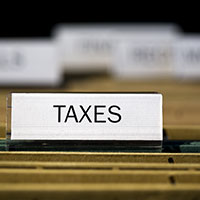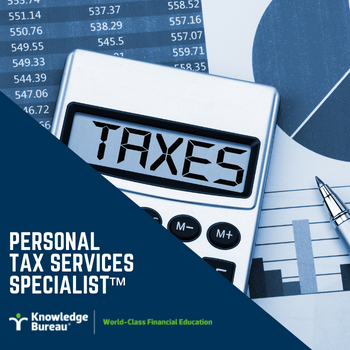Last updated: October 05 2022
Tax Opportunity: Backfill Under-contributions to Tax-Efficient Savings

Fall is in the air which means, from a financial planning perspective, a transition to year-end tax planning activities! Tax savings are such an important hedge against inflation, but Canadians are missing out:
They are under contributing to their RRSPs and TFSAs, diminishing both their income and their lifetime wealth accumulations. Remember that inflation makes for a much more expensive retirement down the line. Year end is a good time to identify and plan what I call a family’s “tax-efficiency gaps”.
Tax-Free Savings Account (TFSA). According to Statistics Canada, there is an average unused contribution room of just under $38,000 in the average TFSA. This is based on calendar year 2020, the most recent stats available. This left a TFSA tax-efficiency gap of about $32,000 or 46%. As interesting is the fact that of total TFSA contributions, just over $71 Billion, 46% of them are withdrawn.
|
Total dollar value of TFSA contributions |
$71,474,012,000 |
|
Number of contributions (transactions) |
132,620,640 |
|
Average number of TFSA contributions (per individual) |
15.1 |
|
Average dollar amount of TFSA contributions (per individual) |
8160 |
|
Total dollar value of withdrawals |
37,939,357,000 |
|
Number of withdrawals (transactions) |
25,116,020 |
|
Average number of TFSA withdrawals (per individual) |
5.4 |
|
Average dollar amount of TFSA withdrawals (per individual) |
8117 |
|
Average unused TFSA contribution room |
37,833 |
|
Average Fair Market Value (per individual) |
22,882 |
TFSA contribution room is partially indexed – expected to rise to an annual maximum of $6,500 in 2023. While TFSA contribution room is not lost on withdrawal, year end is a good time to withdraw if you must pay other bills. But the secret to TFSA success is to put the money back, which you can often do simply by making a smart RRSP decision.
Register Retirement Savings Plan (RRSP). RRSP contributions can be made based on last year’s earned income and is limited to those under the age of  72. Spousal contributions can, however, be made for a younger spouse, if the contributor has reached the age limitation but still has RRSP contribution room. That’s a smart move when one spouse has earned higher income than the other. By making spousal RRSP contributions, it’s possible to equalize future pension accumulations. While you can equally split RRSP pension payments at age 65, equalizing a spousal plan can set you up for more tax-efficient withdrawals before this.
72. Spousal contributions can, however, be made for a younger spouse, if the contributor has reached the age limitation but still has RRSP contribution room. That’s a smart move when one spouse has earned higher income than the other. By making spousal RRSP contributions, it’s possible to equalize future pension accumulations. While you can equally split RRSP pension payments at age 65, equalizing a spousal plan can set you up for more tax-efficient withdrawals before this.
There is a maximum contribution limit each year as well. It’s 18% of last year’s earned income to an annual dollar limit, which is $29,210 in 2022, based on earned income of $154,611 in 2021.
Contribution Limits (RRSP and PRPP)
| 2021 | 2022 | 2023 | |
| Limit | $27,830 | $29,210 | $30,780 |
| Earned Income (Prior Year) | $154,611 | $162,278 | $171,000 |
Check your Notice of Assessment or Reassessment from CRA for your available contribution room. It’s important as RRSP contributors also missed out on tax savings opportunities[1].
Only 22% of eligible RRSP contributors did so and even high-income earners left tax savings on the table; contributing only 73% of their eligible RRSP room[2]. The median contribution in Canada was only $3,600, reflecting lower average earnings per individual. In total, 6.2 million people contributed and during the pandemic that number rose; resulting in just over $50 billion of savings in RRSP accounts.
| 2020 - Contributors | 2019 - 2020 Contributors | 2020 Contributors | 2020 - Total Contributions | 2019 to 2020 Total Contributions | 2020 - Medium Contributions | 2019 - 2020 Median Contributions |
| Number | Change in % | % of Tax Filers | Thousands of Dollars | Change in % | Dollars | Change in % |
| 6,201,670 | 4.9 | 22.3 | 50,053,300 | 13.1 | 3,600 | 10.4 |
The RRSP contribution is particularly important because it not only reduces taxes payable, but it can also increase federal government benefits such as:
- Canada Child Benefit and the GST/HST Credit
- Employment Insurance (EI)
- Old Age Security (OAS)
- Canada Dental Benefit
- Canada Workers Benefit
- Canada Renters Benefit
Bottom Line: Make a “year end” resolution to hedge up your investment portfolio against inflation by shoring up your tax-efficiency gaps. In fact, investors with RRSP room will maximize the RRSP contribution to increase both the tax refund and access to government benefits; and then contribute those windfalls to their TFSA.
Additional Educational Resources: Our featured designation program in September is the DFA-Tax Services Specialist Program. There are six important certificate courses in this program, which can be taken one at a time in our Scholar program. But declaring a specialty now will help you save on tuition fees.
The six certificate courses:
Practical Skills
Professional Income Tax Course - Entry Level
Professional Income Tax Course - Advanced Level
Strategic Knowledge
Contact us to learn more or enrol here.
[1] April 2022 https://www150.statcan.gc.ca/n1/daily-quotidien/220401/t003a-eng.htm
[2] the maximum RRSP dollar limit for 2020 was $69,500
Evelyn Jacks is President of Knowledge Bureau, a national designated educational institute focused on World Class Financial Education. For information about certificate courses leading to specialized credentials see www. knowledgebureau.com or call 1-866-953-4769.
©Knowledge Bureau, Inc. All rights Reserved
